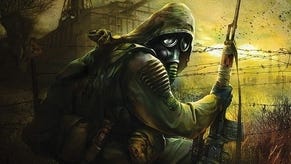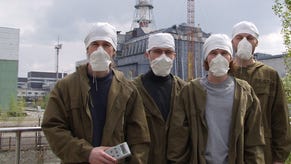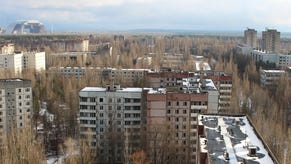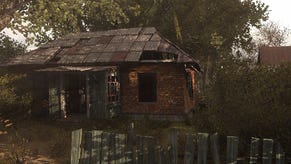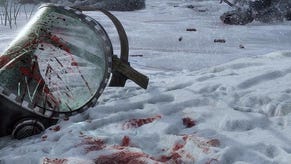S.T.A.L.K.E.R.: Clear Sky
Walkin' and Stalkin'.
Looking for missions at the nearest base, it's not long before we're caught up in a control point firefight playing out over a section of highway. As we temporarily put narrative concerns to one side for the first - but certainly not last - time today, we get a chance to see how S.T.A.L.K.E.R.'s weapons have been tweaked. A common complaint of the original game was that it was easy to get money, but there wasn't much to spend it on. Now each of the game's determinedly unexotic arsenal of hulking shotguns and weighty pistols can have up to sixteen possible levels of upgrade added. Modifications are performed by faction mechanics, and each addition comes at a cost - for example, adding sniper scopes to a gun might mean you won't be able to improve its rate of fire further down the line.
The control-point battles are also a chance to see ALife flourishing: skirmishes seem to break out organically, and even when the fight's over, there's every chance the loser will eventually come back with reinforcements. To aid this, Clear Sky is tentatively squad-based: AI team mates can be given basic commands, but will also be capable of finding cover and looking after themselves. At the moment, they may be too capable: as our developer takes his hand of the mouse to explain the cover system, his team quickly finish off the opposition without him. Players can still choose to go it alone if they miss the lone wolf feel of Shadow, but Clear Sky will reward you for keeping company, and GSC Game World's past form with AI suggests squads will be fun to have around.
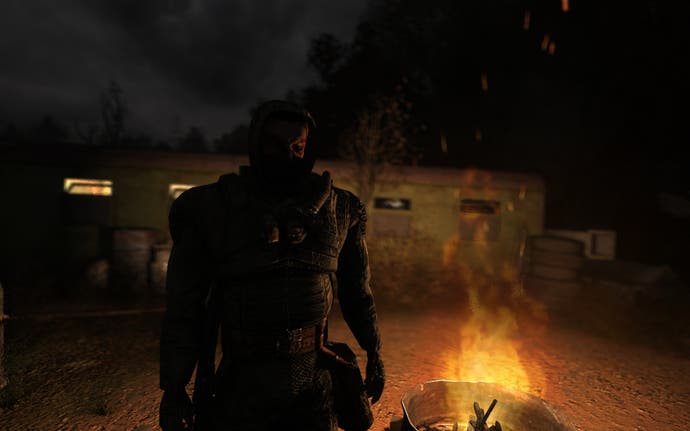
Moving on to a brand new area reveals further opportunities for distraction. Marsh is a stretch of waterlogged sandbanks dotted with sniper towers. Trees sprout from the ground in hesitant clumps, and the odd rusting hulk of a building lingers in the distance, but this is primarily a wild area, filled with mutant boars and bandits. The map is vast, and we've objectives to complete here, but almost immediately, we're off-track and investigating anomalies - areas with unpredictable physics, which now play out like clusters of cosmic landmines hiding artefacts, the game's loot. With upgradeable artefact-detectors available, and an almost mini-game-like maze mechanic to reach the loot, anomalies seem likely to provide another entertaining time-sink.
It's almost a relief to find that S.T.A.L.K.E.R. remains as idiosyncratic as ever. Far from a more commercial sequel, at the moment, Clear Sky seems like a real curiosity. A single-player MMO or a radioactive Animal Crossing, it excels at providing activities for you to do, but may still struggle when it has to focus on a narrative. The team's overall solution doesn't really convince, either: the plan is for the game to be loosely divided into halves, the first section being open-ended and explorative, and presumably holding the majority of the faction activity, before giving way to a more controlled and linear second part where the story takes over. It's a risk - Assassin's Creed stumbled in its later moments with exactly the same move - but it may be the only way to get the balance of story and environment that the developers are after.
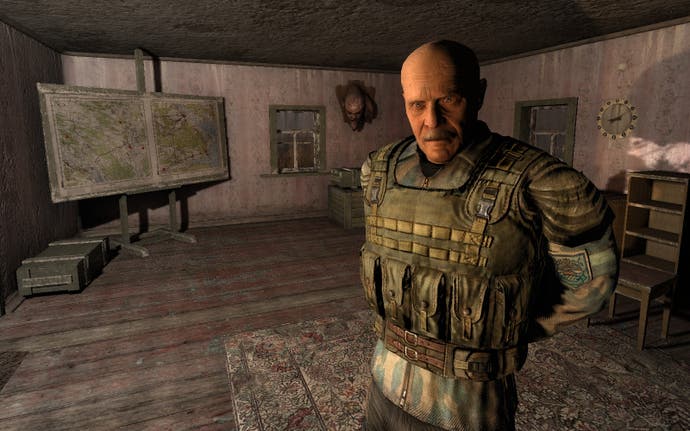
What's easier to see is that Clear Sky is a lot more beautiful than its predecessor, with a wealth of DirectX 10 effects such as volumetric smoke and dynamic shadows. More importantly, however, Clear Sky also inherits Shadow's melancholic art direction: a landscape of folkish campfires, tumbledown water towers, and crippled powerlines.
Those were the touches that made the abrupt and baffling world of Chernobyl so interesting the first time around, and after a few minutes of watching our developer wander the shantytowns of the Zone, it seems we've never been away. There's still a lot that Clear Sky can fail to capitalise on, and the potential for confusion is greater than ever, but GSC Game World has clearly stayed true to its homely mutant - if anything, it looks like it's continuing to evolve.
S.T.A.L.K.E.R.: Clear Sky is due out on PC on 29th August.

